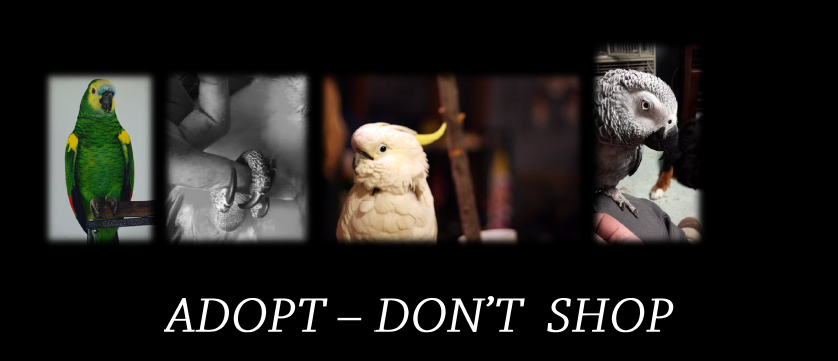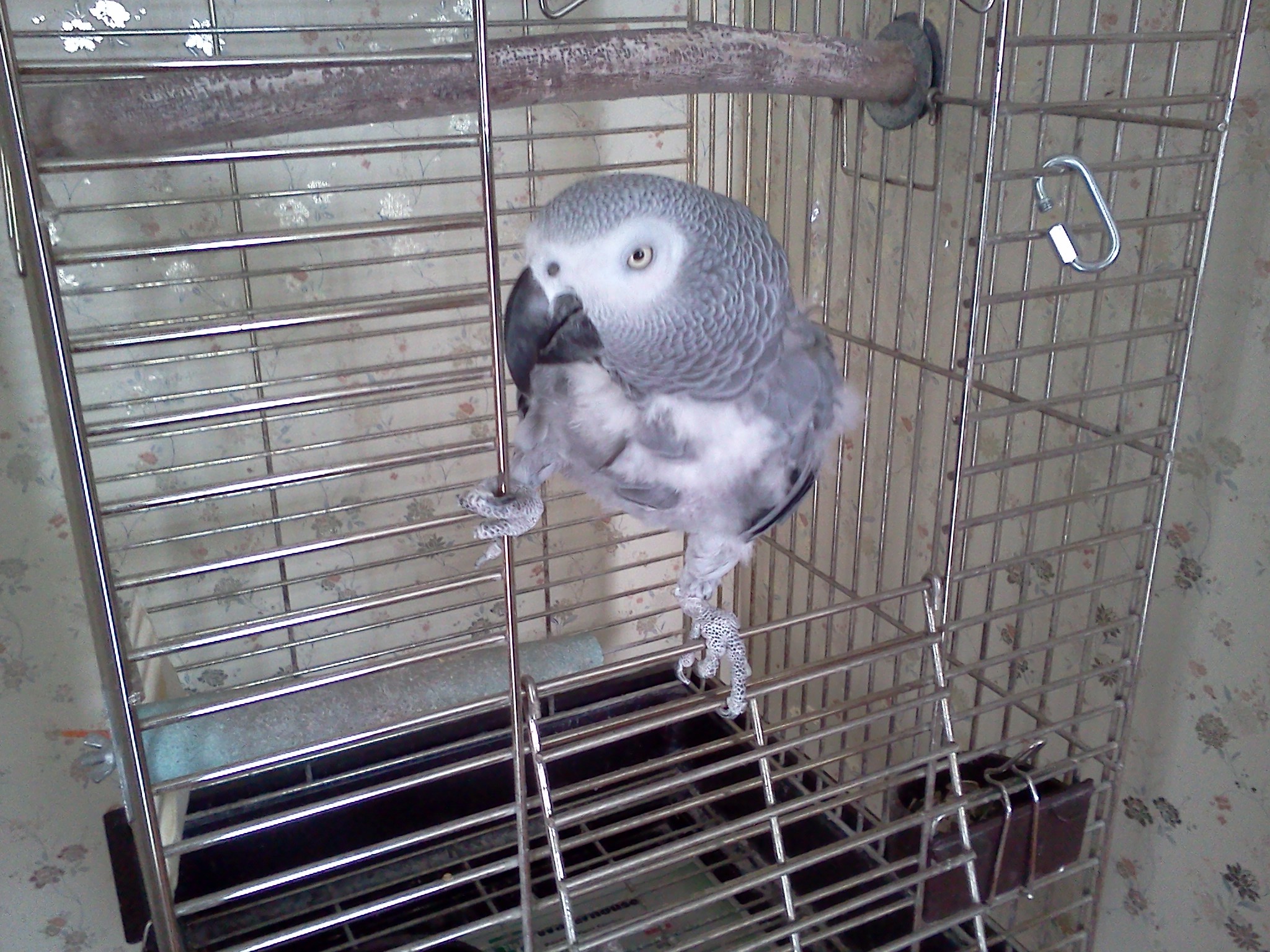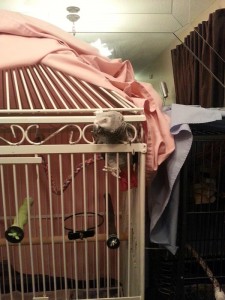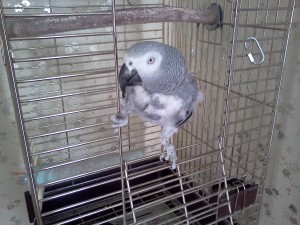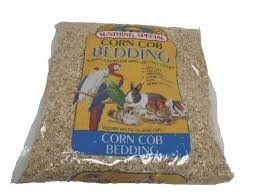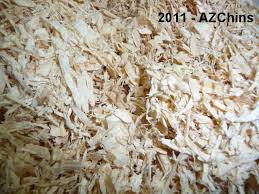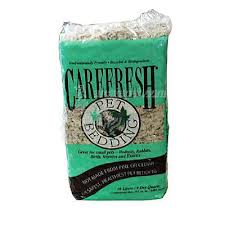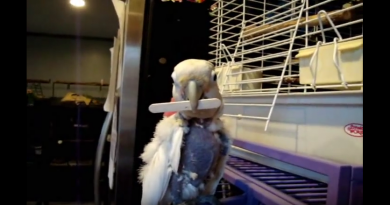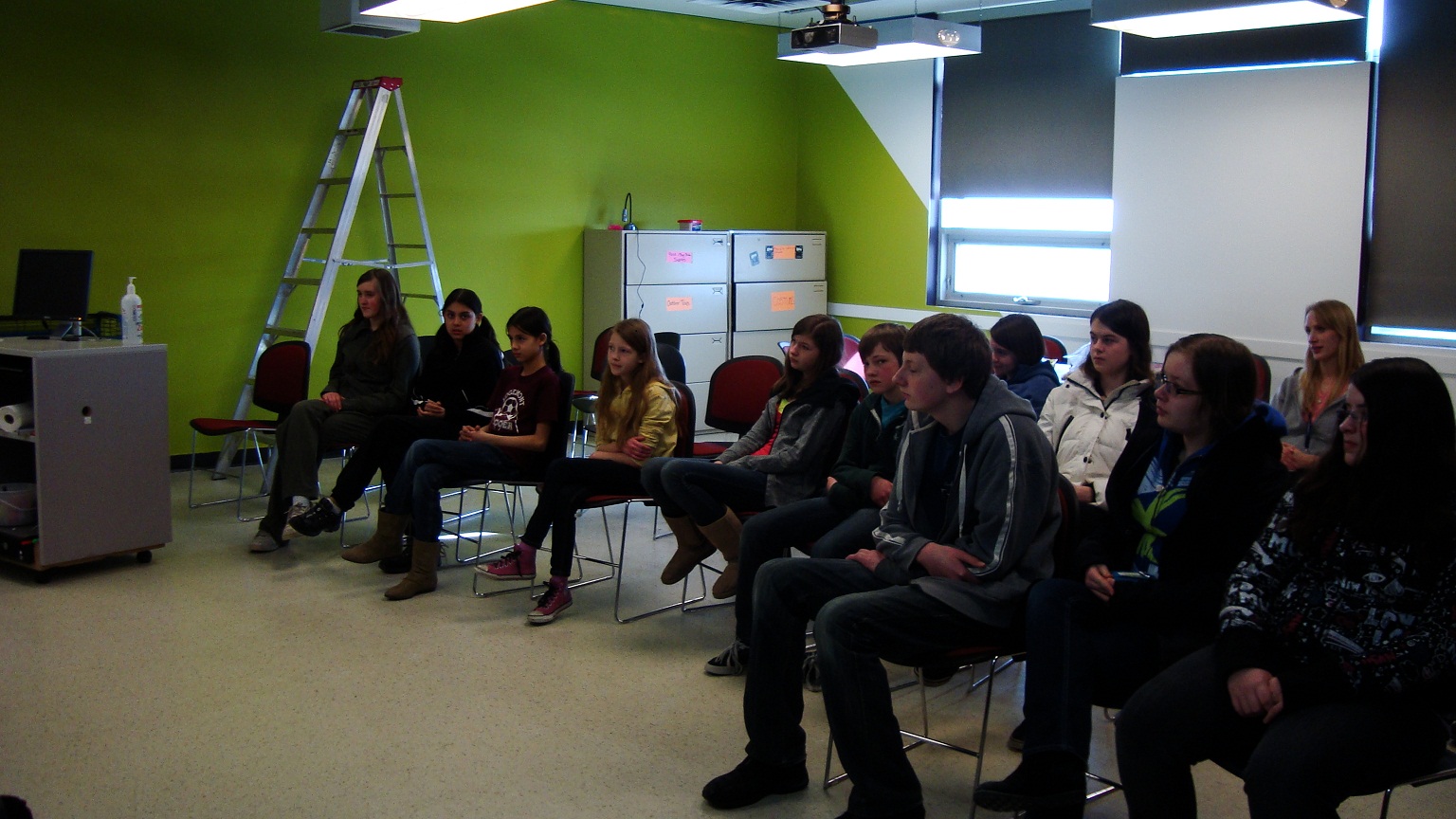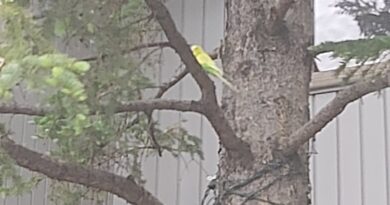Parrot housing
How big should a cage be and what should be in it?
I have always believed that the bigger the cage, the better! A general rule of thumb is that a cage should be large enough for your bird so that when they stand in the middle, and turn a complete circle with wings outstretched – they won’t touch the sides. When they get their spray baths – they can hang upside down and flap madly without banging into anything 🙂
Bar spacing – another critical area – if the bars are too big for a small bird – they risk getting their head stuck – bars to small for a bigger bird – and they can easily break them and smaller bars also make it a bit more difficult for those bigger feet to grab onto. Make sure the cage is SAFE – you would be surprised what birds can do!
(Picture below: This is an older style cage that we see quite frequently – how this bird did not impale himself is still a mystery – he was able to pop his head out just fine but wiggling it back in took some work – he was literally millimeters away from the bar hooking onto his lower mandible. )
Here is a brief rundown of bar spacing:
Finches and canaries – 1/4 to 1/2 inch
Budgies – no more than 1/2 inch
Cockatiels – 1/2 to approx 5/8 inch
Lovebirds and similar sized no more than 1/2 inch
Conures/Senegal sized no more than 3/4 inch
Amazons/Goffins, African greys – normally 1 inch
Macaws and the bigger cockatoos no more than 1 1/2 inch.
(Picture below: This is NOT an acceptable sized cage for an African Grey. It measures 18 x 18 and is 40 inches tall. Consists of one perch – 1 dog toy – two small food bowls at the bottom. Nothing else.)
What kind of cage?
That is a tough question – there are SO many styles/shapes/coatings and manufacturers.
You want a good solid – powder coated cage – stay AWAY from cages that people have repainted themselves – you have NO guarantee what they used to repaint with.
The bird should have easy access to food bowls, all nuts/bolts should be secured with no way for the birds to get to them and remove them. Cockatoos are notorious for escaping their cages – this can be dangerous for them and any other birds in the home – ensure that all food doors and the main door is secure – add padlocks if needed!
Ensure grates/trays are the correct ones for the cage (if buying used)as some are not long enough and will leave gaps big enough for their head to push through.
Be careful of cages that open at the top – always keep that latched when the bird is alone!! If they wiggle their head through as they push up on it – it will snap back down – they will be hung. We have seen this happen (not to our birds)and the birds in question did not survive.
Stay away from round cages!!!
Outfit the cage with at minimum 3 perches (or more) depending on the species and ensure that these are of varying textures and sizes.
Toys – lots of toys – shredding toys – preening toys – foraging toys – toy buckets to hold foot toys – and make sure they are GOOD quality – dollar store toys are not always the safest or the best – if it comes from china – walk away from it.
In the bottom of the cage – use paper or paper towels to line or some other parrot safe paper.
DO NOT USE PINE OR CEDAR SHAVINGS!!!!!!!
Both cedar and pine contain phenol’s-that’s the stuff that makes them smell good. Phenol’s are caustic, poisonous, acidic compounds. These compounds cause irritation to the nasal passages, throat, and lungs of small animals giving bacteria an easy opening, commonly causing pneumonia. Phenol’s also affect the liver and kidneys, these organs are responsible for filtering toxins out of the body. When presented with a large amount of toxins over time, they are unable to filter it all out and begin to fail. An animal with a damaged liver will have a depressed immune system, which can lead to other medical conditions. Just an fyi – Laboratories are slowly weeding out the use of pine and cedar.
In using any substrate such as this – you are unable to see your birds droppings as well – which is always important – and you cannot monitor their food intake. Your bird does not smell – there is no need to use bagged substrates – if your finding your cage smells – clean it more often. Paper ideally should be changed daily and the cages wiped down weekly – with a good scrub/sanitize monthly.
None of these products should be used in your parrots cage to line the bottom.
If you are in doubt – talk to your vet. Please DO NOT rely on the staff at petstores – they are not all knowledgeable – we had been told once that a cockatoo would do fine in a flight cage made for cockatiels and YES we could actually put our grey in there as well.
Safety first and foremost – if your space is to small – consider getting rid of that big couch or tv unit or chair – if you can’t house a parrot comfortably with what they NEED than maybe a parrot is not a good choice for you.

